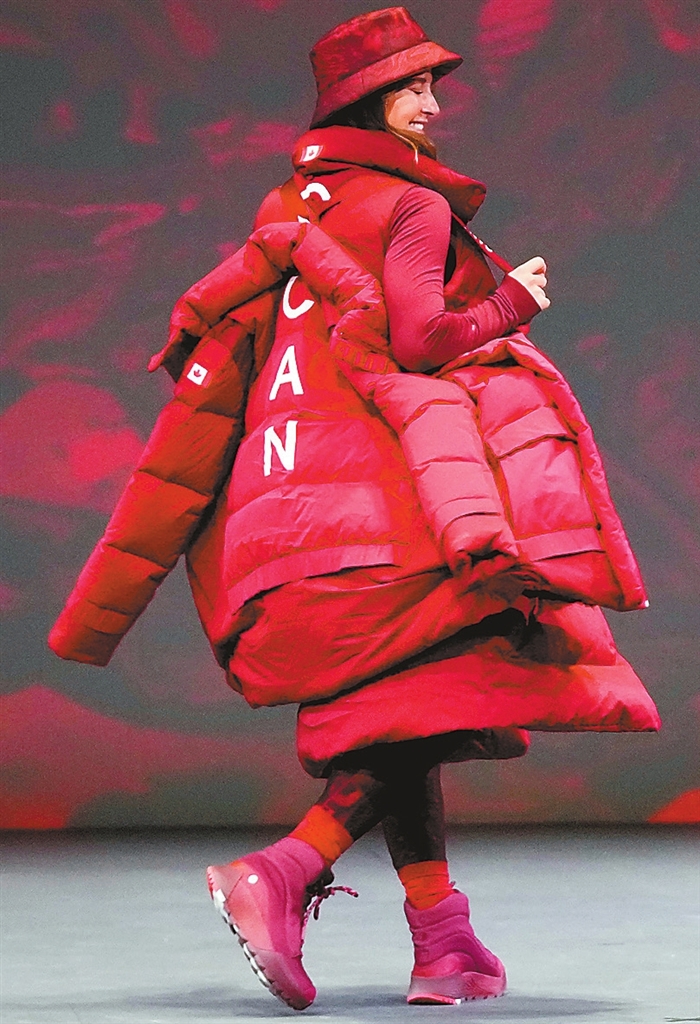




IN fact, Olympic opening ceremonies have become the world’s largest runways and de facto platforms to exercise fashion diplomacy. Here is a “lucky seven” team of fashion hits and misses from the Olympic podium in Beijing. Team Canada A denim fiasco in Tokyo last August prompted headlines like “Canada Has Already Lost the Olympics With This Jacket.” Understandably, Canadian Olympic Committee opted for a safer choice this time. The Vancouver-based athleisure giant Lululemon has created the monochrome uniforms in alternate all-red and all-off-white collections. Successful sportswear design must be part fashion, part science, and all performance. The garments are made with next generation water-resistant, anti-microbial synthetic textiles and take functional versatility to new heights with strategic zippers which allow to adjust length and even transform into backpacks. Team USA Ralph Lauren continues his iconic partnership with the U.S. national team. The designer debuted as an Olympic outfitter 14 years ago at the 2008 Summer Games in Beijing. Among the more exciting additions to the athlete’s unisex wardrobe are on-trend anoraks and puffer jackets with checkered fleece print. The latter has already become a bestseller and an instant collectible item priced at US$2,000 for retail. To further its commitment to sustainability, the brand used polyester recycled from plastic bottles and wool certified by the Responsible Wool Standard (RWS). Kim Kardashian is back as the purveyor of Olympian underwear and loungewear with her apparel label SKIMS. Legendary graffiti artist Eric Haze contributed to the streetstyle-savvy design of ski team uniforms. Team Russia Still under the anti-doping sanctions, Russian athletes cannot participate under their own flag or use state symbols, including the country’s name. However, Zasport — the nation’s official Olympic uniform manufacturer since 2017 — released a collection steeped in Moscow’s tricolor heritage and utilizing iconic geographic outlines. Designer Anastasia Zadorina kept the looks very laconic and in line with global fashion trends. She also added the color of Qing, an azure hue associated with health and harmony in the Chinese chromatic culture. Team Sweden Masahiko Furuta, Uniqlo’s chief designer, said that Sweden’s Olympic collection was based on “our design philosophy of simple made better and less is more.” This minimalist ethos has enabled iconic Swedish brands like IKEA, H&M and Volvo set mainstream lifestyle trends worldwide. All garments are focused on perspiration and body temperature control using special double russet mesh material with a 3D coarse knit and other innovations. Twenty-one athletes from the national team, including 13 curling stars, also became brand ambassadors to promote UNIQLO+, an athletic LifeWear line for active living inspired by the Olympic uniform kits. Team Germany While Adidas makes sense as the German national uniform supplier, its latest collection fails to make a memorable impression. Re-interpreting the flag colors — black, red and gold — the design claims to infuse “rebellious optimism” into the pursuit of sports history and personal wellness. It amounts to hardly anything more than asymmetrical color blocking, a styling tactic Adidas used on its uniforms for the United Kingdom as well. Positioning the allusion to the black tiger as a connection to the Chinese New Year (of the Tiger) seemed farfetched as rare black tiger sightings have predominantly occurred in India. Team China Academy Award-winning costume designer Tim Yip returns to the Olympic host nation to oversee the Champion Dragon Clothes of the Chinese national team. This year’s uniforms for 12 teams in 15 events are manufactured by ANTA. They come in three distinct and epically named collections: Lucky Snow and Cloud, Great Landscape and Flying Snow in Tang Dynasty. The red lines on the sides together with a standing collar convey a sense of upward mobility. Self-heating thermal underwear and next-generation non-slip soles on boots complete the list of innovations and curiosities. Team Kazakhstan The team’s vibrant uniforms left a lasting impression during the Summer Games ceremonies in Tokyo. Kazakh sportswear manufacturer ZIBROO collaborated with Russian designer Dmitry Shishkin. His atelier produces corporatewear for Gazprom and Russian Railways, so he “understands the assignment” of this magnitude. Blue and white colors of the collection represent ice and snow while black symbolizes luck. (SD-Agencies) | 
